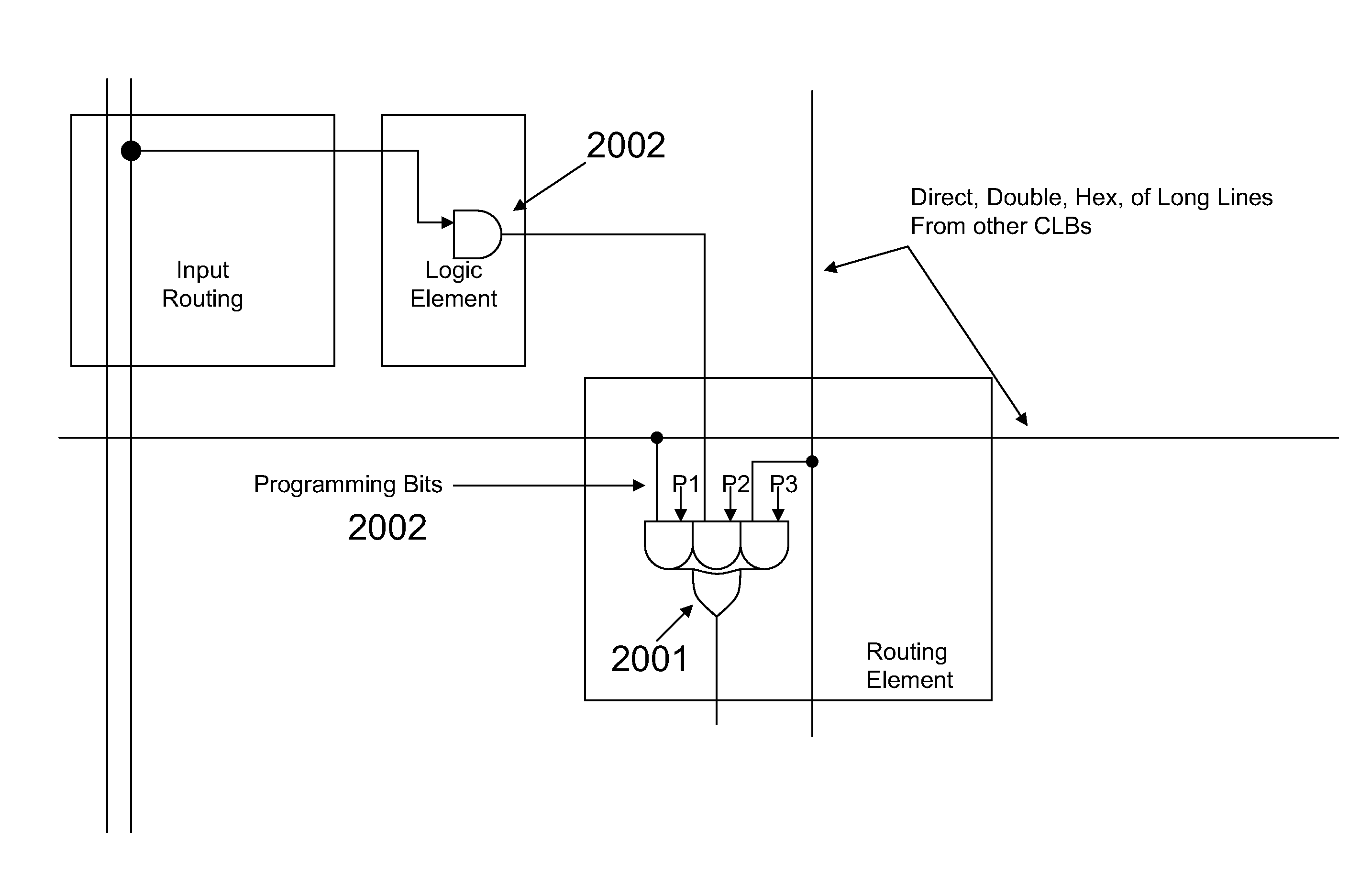Routing for Microprocessor Busses
a microprocessor bus and buss technology, applied in the direction of logic circuits, semiconductor devices, pulse techniques, etc., can solve the problems of low performance of shared input/output implementation, inconvenient use, and inability to meet the needs of large-scale inputs,
- Summary
- Abstract
- Description
- Claims
- Application Information
AI Technical Summary
Benefits of technology
Problems solved by technology
Method used
Image
Examples
Embodiment Construction
[0115]FIG. 21: Conventional Multiplexer Tree in an FPGA
[0116]FIG. 22: Routing of Signals
[0117]FIG. 23: The output AND function in a Xilinx like Logic Element
[0118]FIG. 24: Implementation of Routing Element
[0119]FIG. 25: RAM block with AND outputs
[0120]FIG. 26: Transfer Gated replaced by OR function with Repeaters
[0121]FIG. 27: An alternate embodiment incorporating the AND function in the output routing function
[0122]FIG. 28: Preferred Embodiment of a Microprocessor Peripheral in an FPGA
[0123]FIG. 29: Data Output Routing of Distributed RAM
[0124]FIG. 30: Logic Element Configuration for Efficient CAM Implementation
[0125]FIG. 31: Hierarchical Construction of a Large ASIC
[0126]FIG. 32: Routing Within a Hierarchical Block
DETAILED DESCRIPTION OF THE INVENTION AND THE PREFERRED EMBODIMENT
[0127]The preferred embodiment of the invention comprises the addition of an AND element and buffer to the output of the logic element of an FPGA, a routing element that utilized unidirectional signals and ...
PUM
 Login to View More
Login to View More Abstract
Description
Claims
Application Information
 Login to View More
Login to View More - R&D
- Intellectual Property
- Life Sciences
- Materials
- Tech Scout
- Unparalleled Data Quality
- Higher Quality Content
- 60% Fewer Hallucinations
Browse by: Latest US Patents, China's latest patents, Technical Efficacy Thesaurus, Application Domain, Technology Topic, Popular Technical Reports.
© 2025 PatSnap. All rights reserved.Legal|Privacy policy|Modern Slavery Act Transparency Statement|Sitemap|About US| Contact US: help@patsnap.com



